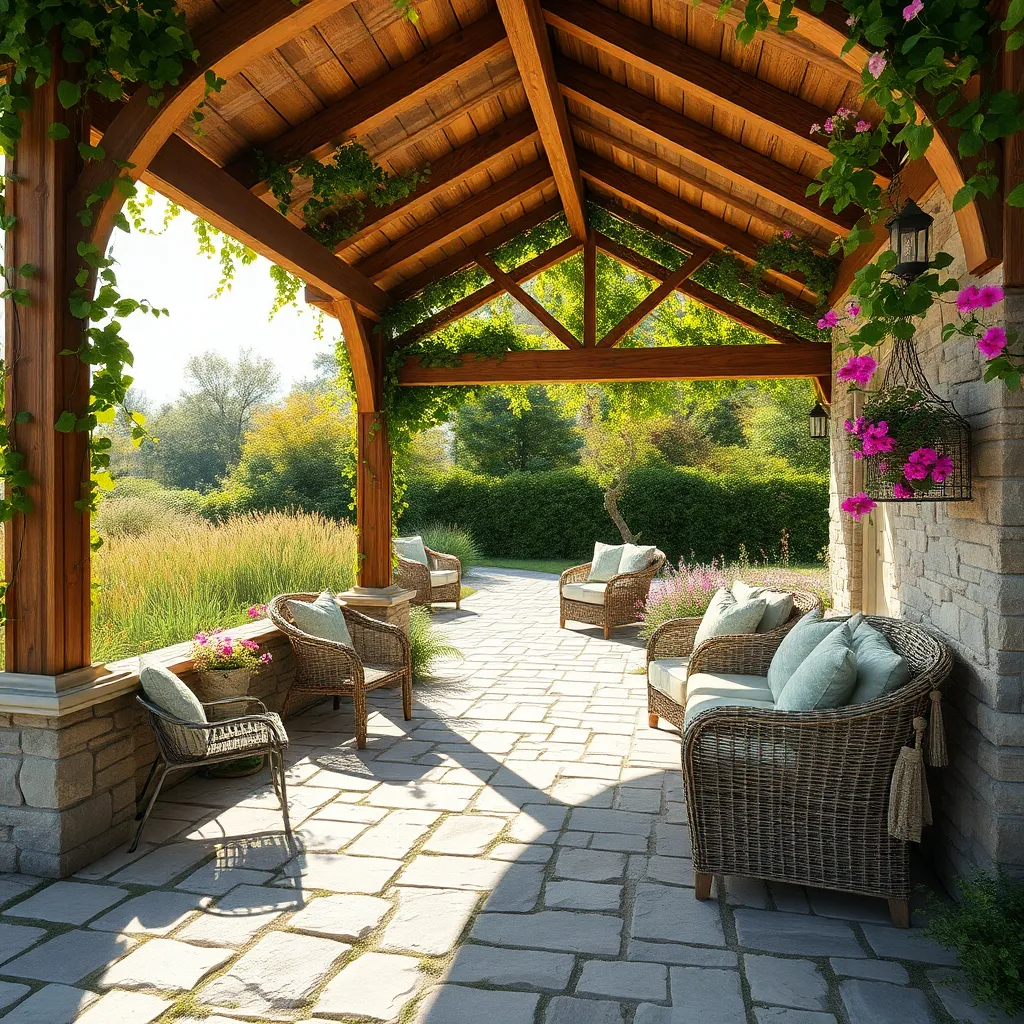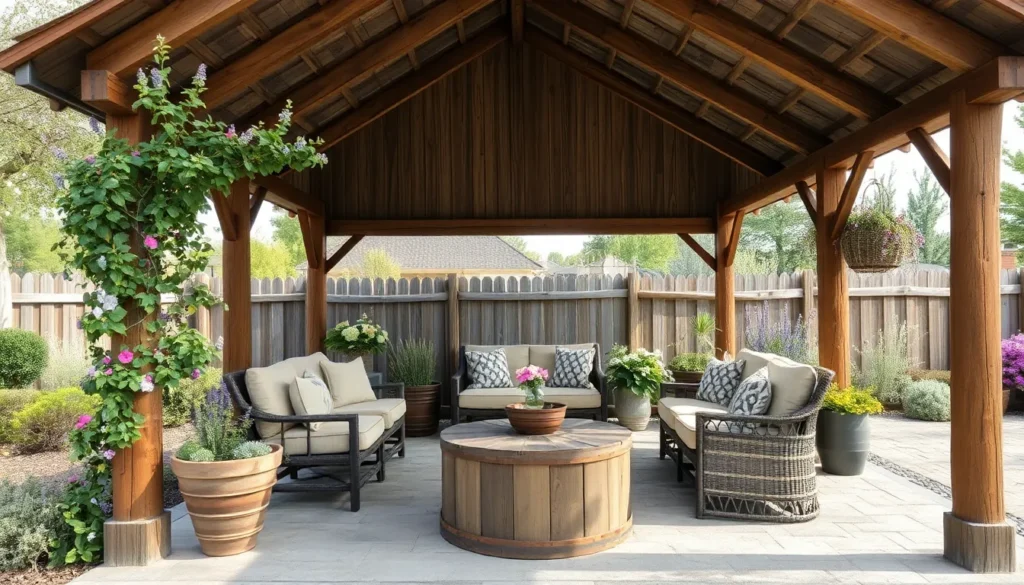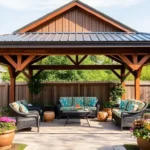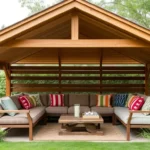Imagine stepping into your garden and being greeted by a charming rustic shelter that not only protects you from the elements but also transforms your outdoor space into a cozy retreat. Whether you’re a novice just starting to dabble in outdoor projects or a seasoned homeowner seeking a fresh addition, our guide, “Rustic Outdoor Shelter Ideas for Your Garden,” is brimming with inspiration and practical advice to help you create that perfect haven.
In this guide, you’ll discover a variety of shelter ideas that blend seamlessly with the natural beauty of your garden, offering a delightful mix of style and function. From enhancing your outdoor gatherings to providing a peaceful nook for relaxation, these shelters promise to enrich your outdoor living experience. Get ready to roll up your sleeves and feel confident as you embark on a journey to elevate your garden into a welcoming extension of your home.
Incorporate Reclaimed Wood Structures

Incorporating reclaimed wood structures into your garden is a fantastic way to add rustic charm while being environmentally friendly. Consider using reclaimed wood to build a simple pergola or gazebo, as these structures not only provide shade but also create a focal point in your outdoor space. When selecting reclaimed wood, look for pieces that are sturdy, free from rot, and sourced from barns or old buildings to ensure durability and character. For beginners, starting with a basic design using pre-existing plans can simplify the process, while advanced DIYers might experiment with custom designs that blend different wood tones and textures.
Another design element to explore is the use of reclaimed wood for outdoor furniture, such as benches or tables, which complements the shelter and enhances the rustic aesthetic. Ensure the wood is treated properly to withstand weather conditions; a simple coat of sealant can help protect it from the elements. Advanced builders might integrate additional features like a built-in planter box or shelving to maximize functionality.
- Use galvanized steel brackets and screws for assembly to prevent corrosion.
- Consider adding climbing plants around your structure to naturally blend it into the garden landscape.
With a little creativity and patience, your reclaimed wood project can become a treasured part of your outdoor retreat.
Utilize Natural Stone Foundations

Leveraging natural stone foundations can add a timeless charm to your garden shelter while offering durability and stability. Begin by selecting local stones, such as granite or limestone, which blend seamlessly with the surroundings and are readily available in many areas. To lay a solid foundation, clear the area and dig a trench about 6 inches deep and 12 inches wide, ensuring the base is level and compact. Position the stones strategically to interlock naturally, providing a stable base that can support various shelter structures, from pergolas to gazebos.
For a truly rustic look, consider using a dry-stack technique, which involves stacking stones without mortar for a more natural appeal. This method requires patience and precision, as you’ll need to fit each stone snugly against the others. Advanced gardeners might opt to incorporate a drainage layer beneath the stones to prevent water accumulation and ensure longevity. Remember, the key to a successful stone foundation lies in the careful selection and placement of each stone, turning your foundation into a focal point of your outdoor space.
Add Vintage-Style Iron Fixtures

Incorporating vintage-style iron fixtures into your outdoor shelter can instantly elevate its rustic charm. These fixtures, such as wrought iron brackets, hooks, and hinges, offer both durability and aesthetic appeal. Opt for pieces with intricate designs to add character, or choose simpler options for a more understated look. When installing iron features, ensure they are coated with a weather-resistant finish to prevent rust and maintain their beauty over time, especially in humid or rainy climates.
For those looking to add an extra layer of detail, consider using antique iron door handles or lanterns to complement the shelter’s overall design. These elements not only serve a practical purpose but also enhance the ambiance with their vintage flair. Begin with accessible areas like entryways or focal points where the impact of these fixtures will be most noticeable. Advanced gardeners might explore custom ironwork to tailor the design specifically to their garden’s theme, creating a unique and cohesive outdoor space. By thoughtfully integrating these features, you can craft a shelter that’s both inviting and timeless.
Choose Earth-Tone Color Palettes

Incorporating earth-tone color palettes into your outdoor shelter design can create a harmonious and natural look that blends seamlessly with your garden. Start by choosing colors like muted greens, soft browns, and warm ochres for your shelter’s walls and roofing. These colors not only complement the natural surroundings but also offer a timeless appeal. Opt for natural materials like wood or stone, and finish them with stains or paints in these earthy shades to maintain a rustic charm while ensuring durability against the elements.
For a more advanced touch, consider using mixed textures and finishes within your earth-tone palette to add depth and interest. For example, use a combination of matte and glossy finishes to highlight architectural features or create visual contrast. Incorporate elements such as weathered wood beams or stone accents to enhance the rustic aesthetic. If you’re painting or staining, test your chosen colors on small sections first to see how they interact with different light conditions throughout the day, ensuring the final result is exactly as desired.
Plant Native Flora for Shade

Enhance your garden’s rustic charm by planting native flora to create natural shade. Native plants are well-adapted to your local climate, requiring less maintenance and water once established. Consider trees like oak, maple, or dogwood, which not only provide effective shade but also support local wildlife. For a more immediate impact, opt for fast-growing shrubs like elderberry or serviceberry, which can quickly fill in open spaces and offer a lush backdrop for your seating area.
Strategically plant these natives around your outdoor shelter to create a cool, inviting oasis. When planting, ensure proper spacing to allow for growth—typically, at least 10 to 15 feet between larger trees and structures. Use organic mulch around the base to retain moisture and suppress weeds. For a layered effect, mix in native grasses or flowering perennials like coneflower and black-eyed Susan. This not only enhances the aesthetic but also promotes biodiversity, making your garden a haven for pollinators.
Conclusion: Creating Beautiful Outdoor Spaces
In exploring rustic outdoor shelter ideas for your garden, we delved into five key relationship concepts: creating shared spaces that foster connection, the importance of collaboration in design, embracing nature as a grounding element, nurturing intimacy through intentional settings, and cultivating a sense of belonging in your shared environment. These concepts not only enhance the physical beauty of your garden but also strengthen the emotional bonds within your relationships.
As a next step, consider planning a simple project with your partner or loved ones to create a cozy nook or corner in your garden. This collaborative effort will deepen your connection and provide a tangible representation of your shared love and creativity.
Remember, relationship success is an ongoing journey enriched by shared experiences and intentional spaces. Bookmark this article as a resourceful guide and revisit it whenever you seek inspiration or wish to infuse new life into your outdoor spaces and relationships. By taking these steps, you’re not just enhancing your garden—you’re cultivating lasting, meaningful connections. Let your garden be a testament to love’s enduring growth and resilience.






